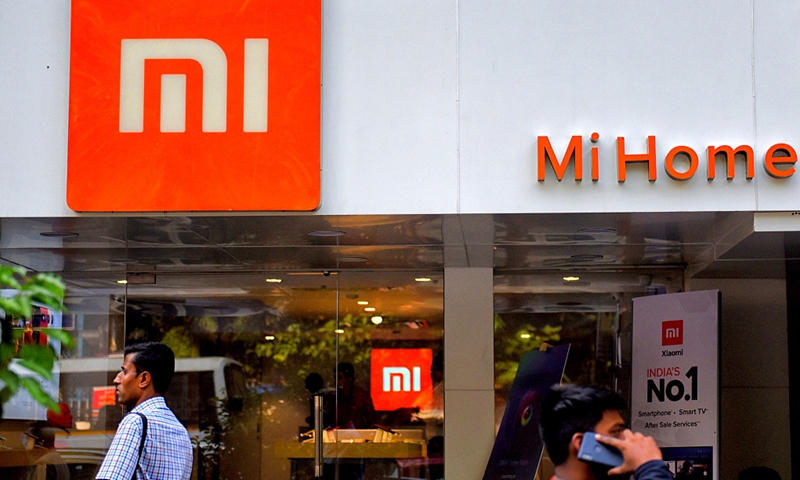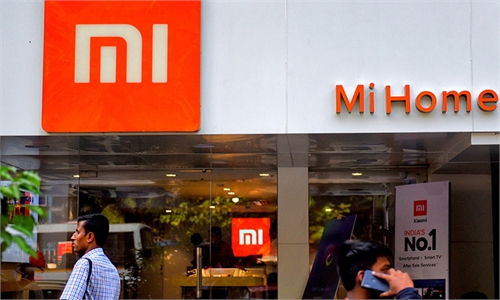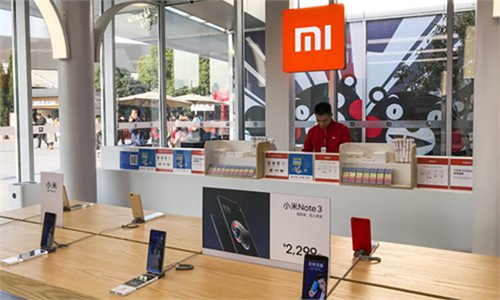
Xiaomi India Photo: VCG
Chinese mobile giant Xiaomi Corp ranked top in terms of smartphone shipments in India for the 18th consecutive quarter, the company’s Q1 financial report showed on Thursday. This came before the firm’s recent dispute with the Indian authorities, which led to $725 million worth of Xiaomi’s assets being seized in April for allegedly breaching India’s foreign exchange laws.
According to the financial report, in the three months ended March 31, Xiaomi’s unaudited revenues in markets other than the mainland stood at 37.46 billion yuan ($5.55 billion), up from 37.41 billion yuan in the first three quarters of 2021.
Revenues from overseas markets accounted for 51 percent of the company’s overall income in the first quarter, and the main sources were India and Europe, Xiaomi noted in the financial report.
Xiaomi also reported that the company’s smartphone shipments ranked top in India for the 18th consecutive quarter in the first three months. It didn’t reveal specific financial data in the Indian market.
In April, India’s anti-money laundering agency seized assets worth about $725 million from Xiaomi India for allegedly breaching the country’s foreign exchange laws, in what is considered a big blow to the Chinese phone maker.
India has been one of the most important overseas markets for Xiaomi. In the first quarter of 2021, Xiaomi’s smartphone shipments in India accounted for about 23 percent of the country’s overall phone shipments, followed by Samsung and Realme, according to data released by analysis company Counterpoint.
Xiaomi’s president Wang Xiang said in a press conference on Thursday that Xiaomi India has insisted on operating in line with local laws. The company will keep up communication with India and hopes to reach a consensus. The company has also made some personnel adjustments to better cope with the situation.
Independent tech analyst Fu Liang told the Global Times that the buying power of Indian consumers is relatively weak, and therefore the cost-effective phones made by Xiaomi have become popular in the country.
Also, Xiaomi’s efforts to integrate with India’s local resources, such as by setting up local factories, helps its entrance and growth in the Indian market, Fu said.
In early 2021, Xiaomi revealed plans to open two new mobile manufacturing plants and a television plant in India.
Fu said India is starting to realize that it can use its market advantages to stimulate its own production power, and it tends toward localization policies. It is also intensifying restrictions on certain forms of overseas investment, especially in terms of internet apps.
“But when it comes to low added value products like smartphones, I don’t think they will do what the US does to Huawei,” Fu told the Global Times.
He also said that there remains a certain anti-China sentiment in India, and it’s unclear if India will intensify efforts to push out Chinese companies. But if India’s business environment does not change too drastically, Xiaomi’s business operation in the country is unlikely to be heavily affected.
“I believe Xiaomi can find a win-win solution with the Indian government and its Indian partners, and will manage to get its share of profits out of cooperation with them,” he said.



